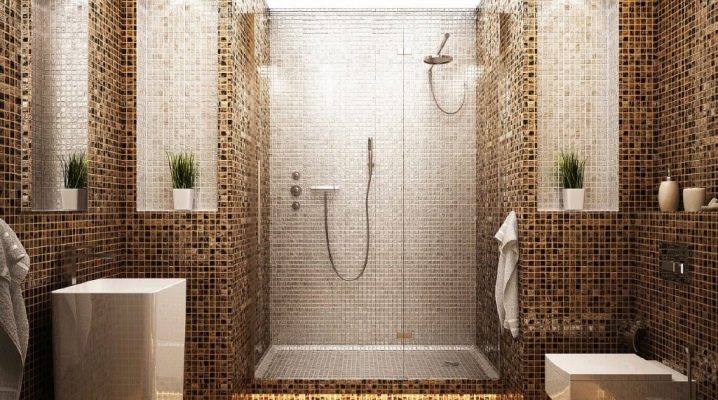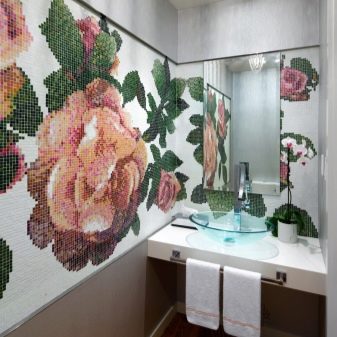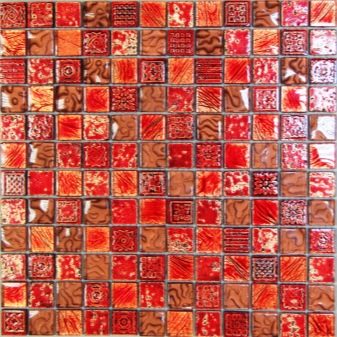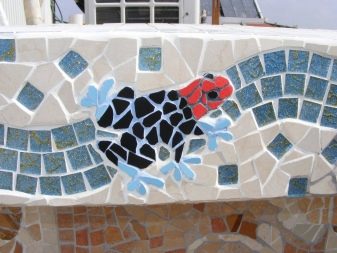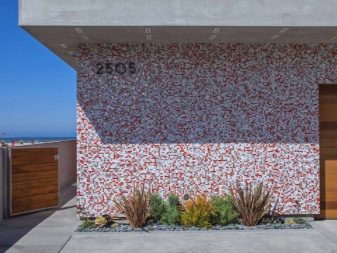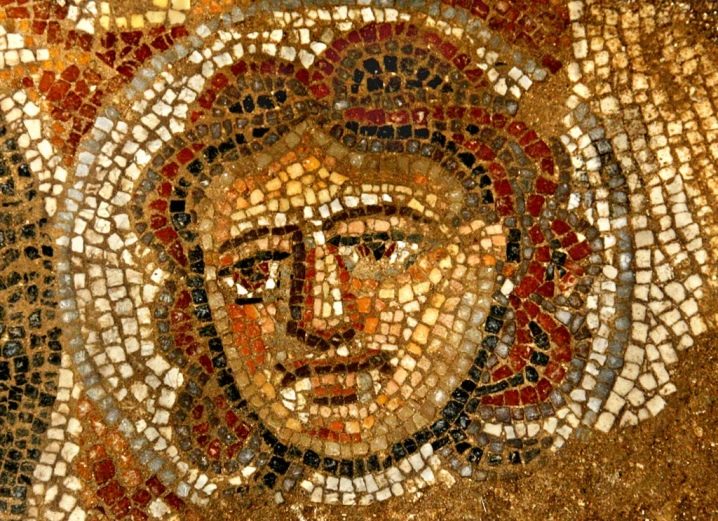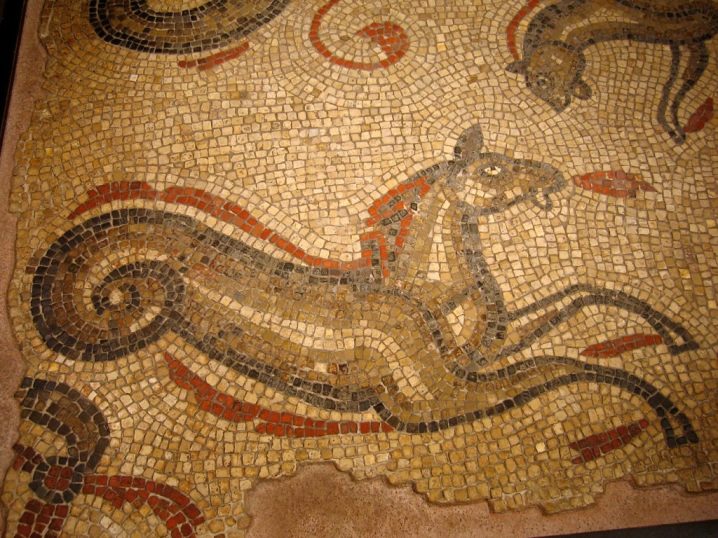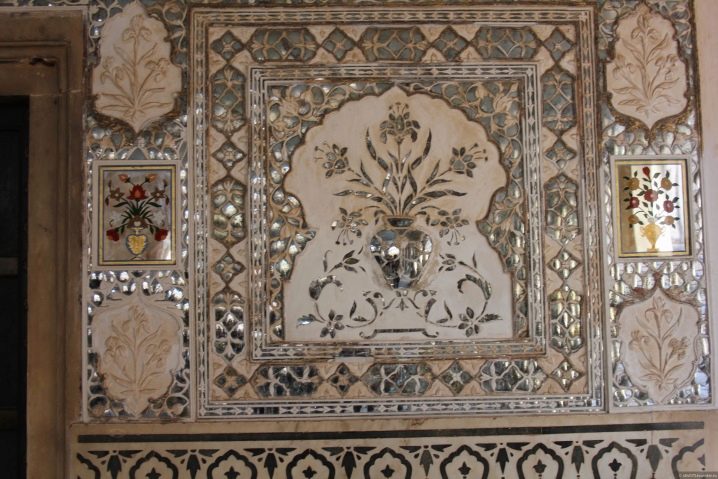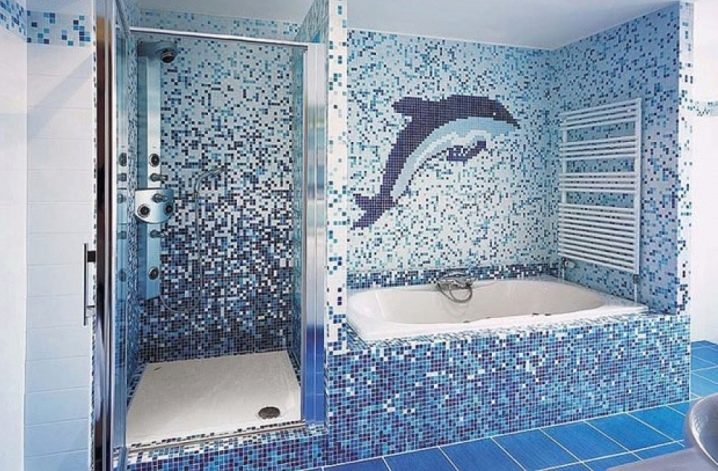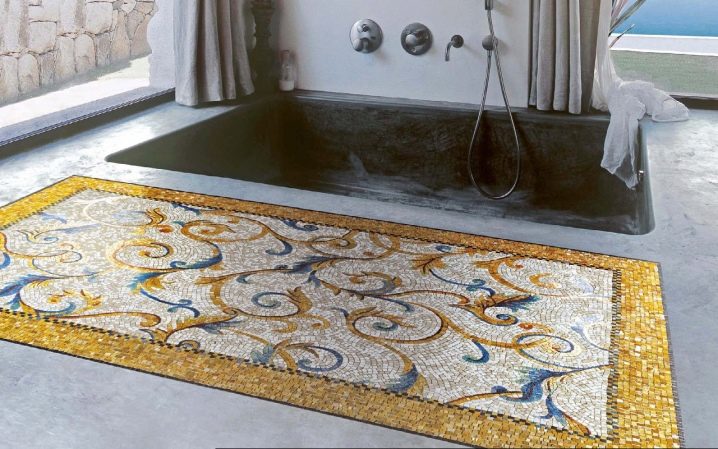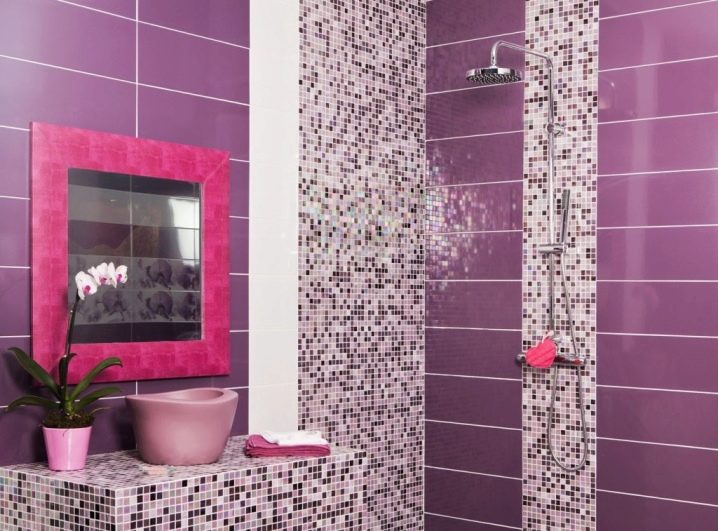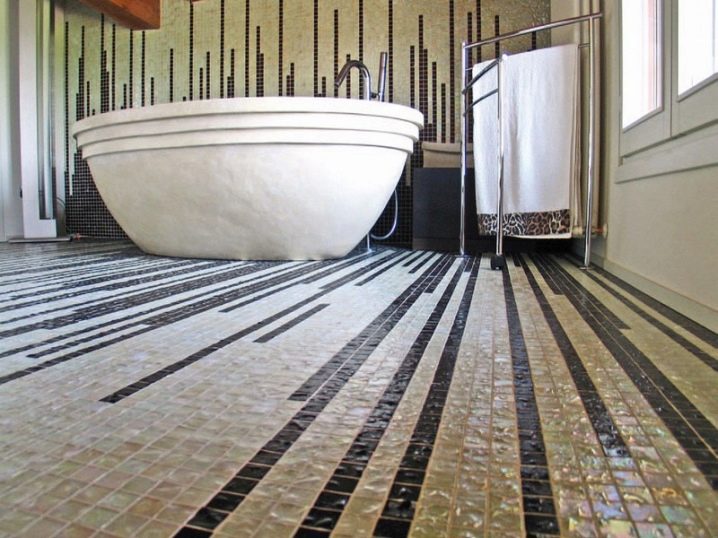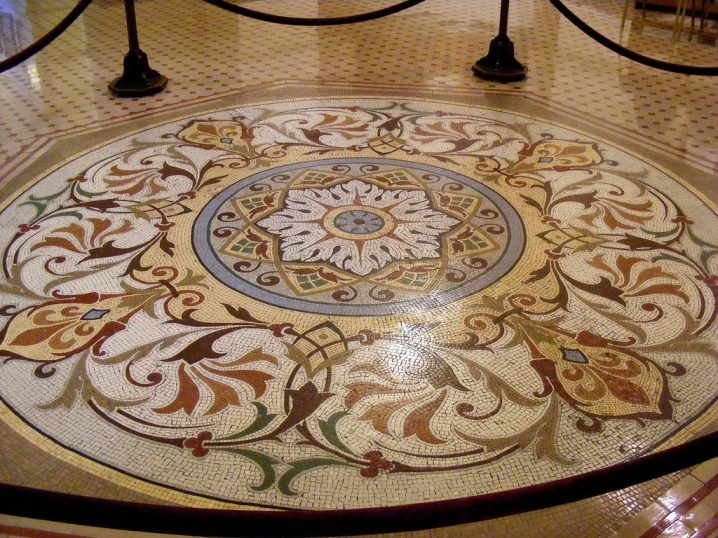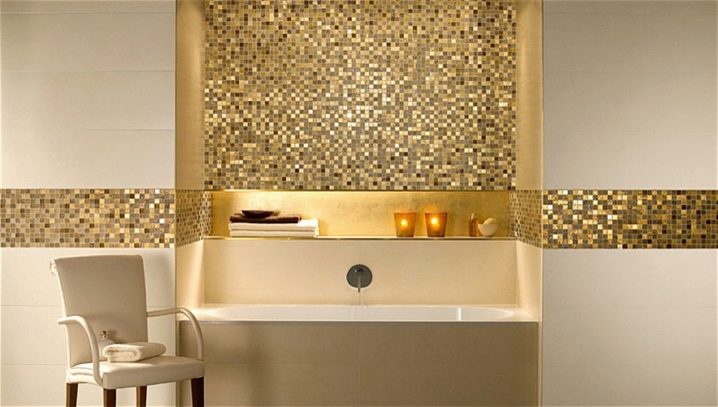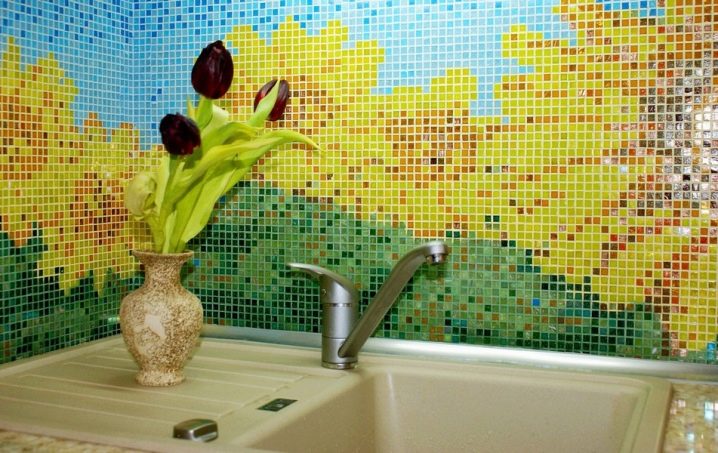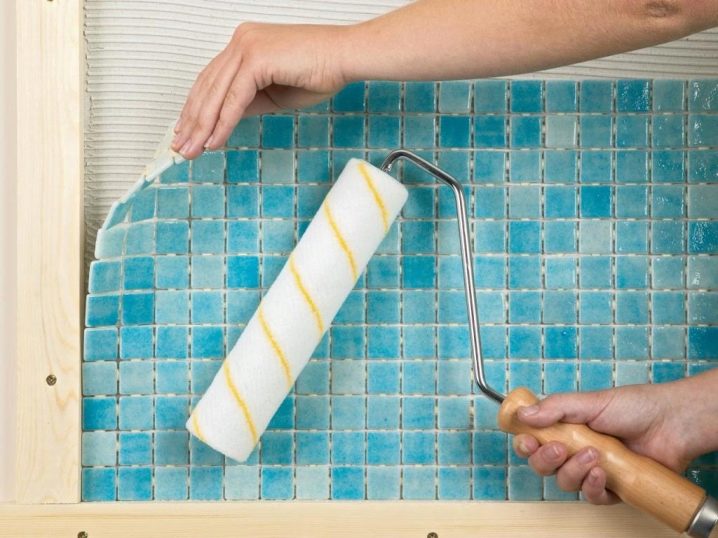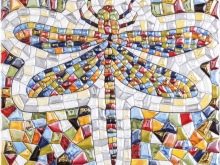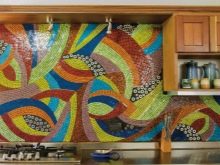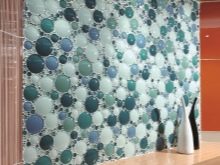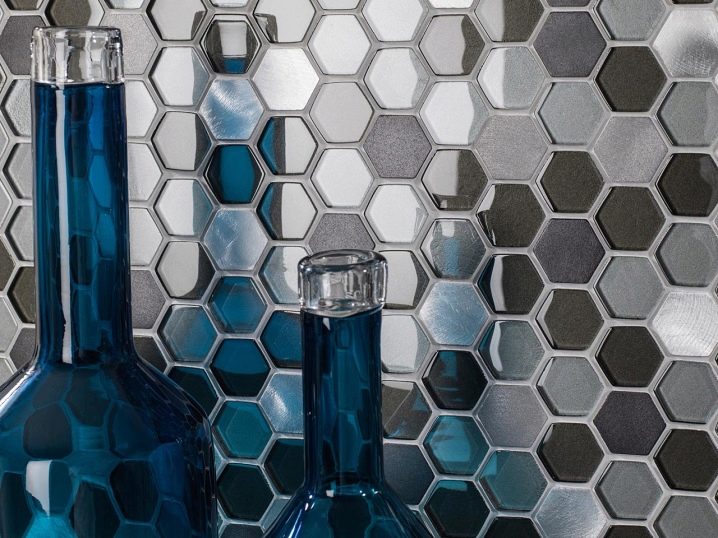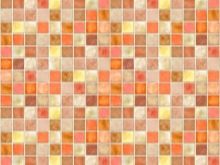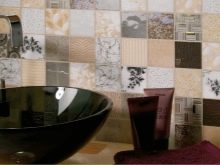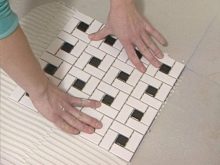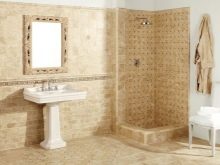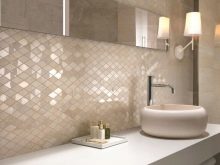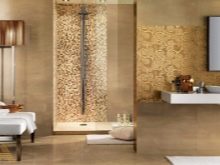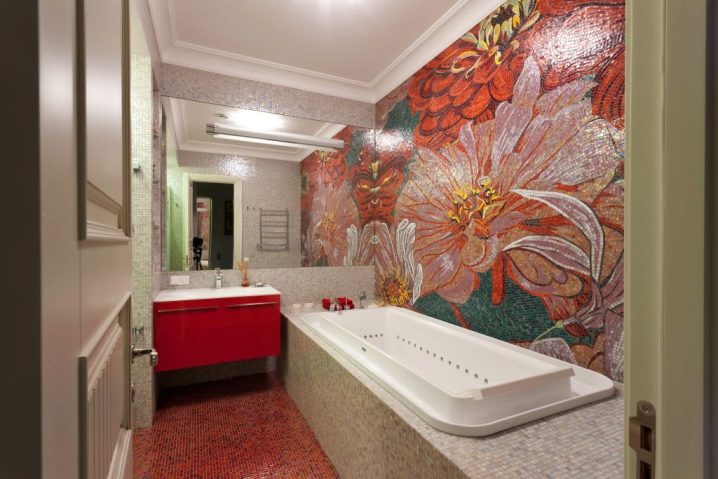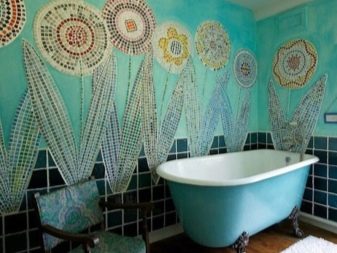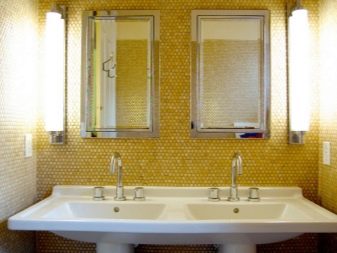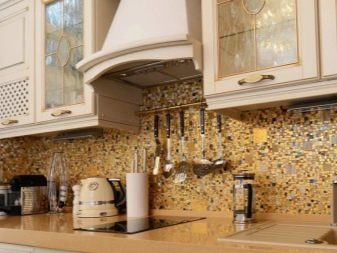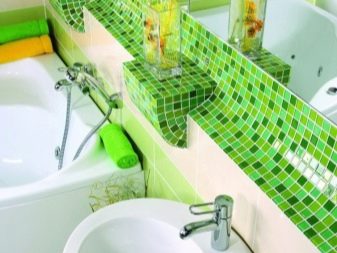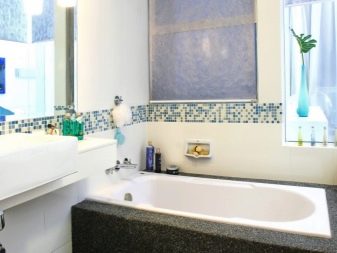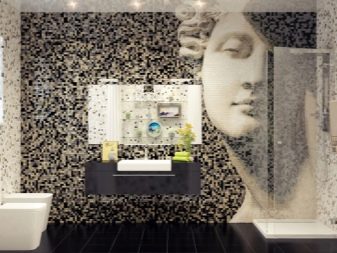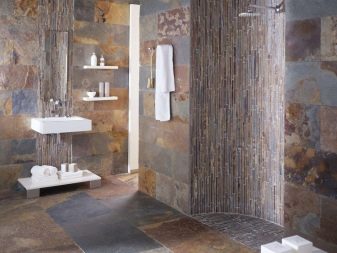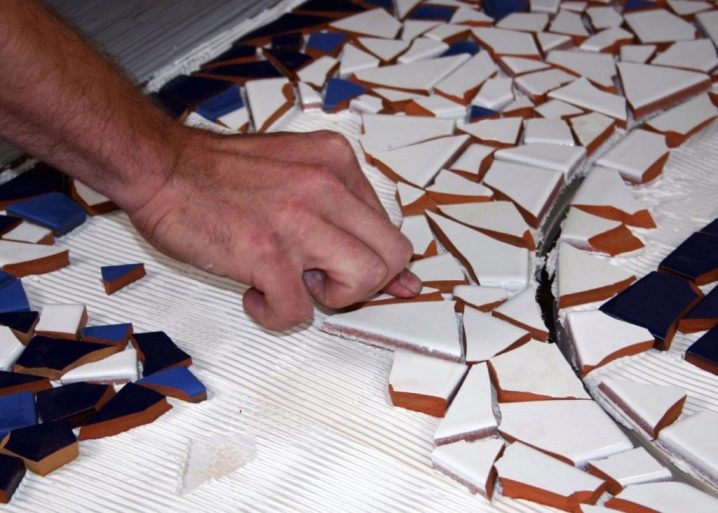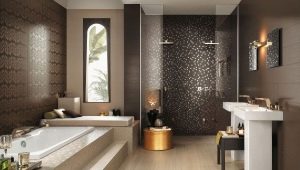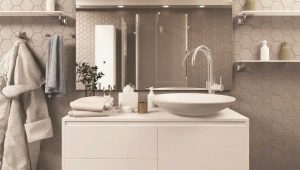Ceramic mosaic: features and benefits
Among the huge variety of finishing materials, ceramic tile is one of the most practical coatings for rooms with high humidity. Today it is ordinary and familiar material. For those who are eager for originality and exclusiveness, we suggest to consider a mosaic technology: facing of surfaces with small pieces of finishing material, which together form original patterns and artistic canvases.
What it is?
Mosaic - one of the areas of arts and crafts, known since time immemorial. In a broad sense, a mosaic is a finished picture created using various small particles. Most often, the particles for the image take a uniform, approximately the same in size. Today, the material for the mosaic canvas are pieces of ceramics.
Mosaic pattern is created in two ways. The first option has been used since ancient times to decorate interior spaces, as well as cladding facades of buildings. It involves the application of pieces of chips on a drawing of a drawing in a prepared soft surface (primer). The soil can be lime, mastic, cement or wax. The second method is more modern and includes the initial application of chips on a separate canvas (cloth, paper, mesh). After that, the canvas is fixed on the wall as an independent facing material.
A bit of history
Mosaic art has more than one millennium. Archaeological excavations indicate that mosaic fragments belong to the III-IV millennium BC. This preserved pieces of the facades of buildings, interior decoration, household items (signs, boxes). The ubiquity of mosaic technology is simply explained. This is an inexpensive way to finish, also durable and beautiful.
In ancient times, when the main method of construction was the processing of monolithic blocks of stone, folding panels and paintings of small fragments of stones was a matter of less expense.The mosaic adorned the facades and inner chambers of palaces, cathedrals, and public institutions. In the course were semi-precious polished stones, which added a special luxury to the decoration of the room.
In the modern world, the mosaic has not lost its relevance. Mosaic decorations from the middle of the last century can be found in the decoration of state institutions, metro stations, and underpasses. Each epoch introduced its ornaments into mosaic pictures.
Features and benefits
Due to the small elements of the mosaic fabric, the method is suitable for facing any, including hard-to-reach surfaces. Where it is difficult to get close to a large tile, the mosaic pattern on the grid will perfectly lay down. These can be convex parts of columns, niches, structures of irregular geometry. The ability to hide surface imperfections is the main feature and the main advantage of the mosaic.
Horizontal, vertical irregularities and flaws are often not amenable to high-quality finishing with solid materials. Mosaic mesh allows you to solve similar problems, adding charm to the entire interior. It is easy to clean, not afraid of cleaning products and wet processing.Among the other advantages of ceramic mosaics are a few.
Strength
Due to the fastening of many small particles, mosaic ceramic tiles are resistant to loads and mechanical damage more than the analog of the traditional size. A regular tile with a random impact can crack or break all material.
Small pieces of the mosaic, separated from each other, better withstand shocks.
Low slipperiness
Thanks to the grout, which is used to fill the joints between mosaic chips, the tile becomes less slippery even when moisture gets on it.
Design and colors
Among the variety of the proposed options and models it will not be difficult to choose a mosaic canvas for every taste, size and wallet.
The disadvantages of ceramic mosaic can be attributed to its increased cost compared with conventional ceramic tiles. This is due to the complexity of the set of patterns and the number of small parts in the product. Ceramic pieces on the grid is convenient to apply on hard-to-reach surfaces. Therefore, the ratio of price and material capabilities is fully justified.
Another disadvantage of this method of lining can be considered the relative complexity of installation. In order to work professionally with a mosaic grid and to create a high-quality room, we need certain skills and experience.
Therefore, experts advise to pre-examine the installation process. You need to understand whether you are able to cope with this task yourself or it is better to entrust the work to the masters.
Types of modules
Since the process of laying individual particles of a mosaic on a bulk surface is too painstaking work for a modern person, special modules with already prepared assembled mosaic fragments were created. This greatly simplifies the installation process and avoids color errors when laying out the picture. By the form of the modules are divided into 2 types.
Traditional
Mosaic chips chips have already been applied to a larger clay tile, the finished lining material is applied to the surface in the usual way of laying tiles.
Mesh
Chips are applied on a flexible base (fiber mesh or paper), which allows them to cover the surface, rolling the roll, as when glueing wallpaper.
Forms
In modern streaming production, the shape of the mosaic is usually standard. She may be:
- rectangular;
- square;
- triangular;
- oval;
- round.
The hexagonal shape in the form of honeycombs is particularly attractive. It gives the interior an unusual look, creates a feeling of a convex embossed surface. This tile is often used in high-tech or modern style. In a certain color scheme, it gives the interior a futuristic look. For styling vintage ornaments, creating mosaics in vintage or retro style, non-standard suits best (pieces of broken ceramics of various sizes and shapes).
It is fascinating, but painstaking work to add patterns from them. Therefore, on sale are ready-made versions of tiles from assorted fragments.
Dimensions
The standard tile sizes are pieces of 20x20 mm. However, this figure can vary from 10 to 100 mm. The smaller the pieces of chips, the clearer the image is obtained as a result. Here you can draw an analogy with pixels in a digital image. For paintings with accurate drawing of elements using the smallest elements.
The dimensions of the block-module vary within 30x30 cm, but they can be larger if it is intended to design volumetric surfaces.
Surface texture
The appearance of the material can be any and depends on the method of surface treatment. Modules containing mosaic chips come in 3 types.
- Matte. Standard option for flooring bathroom, porch, walkways.
- Glossy. Bright wall covering material, rich colors, reflection and play of light contribute to the decoration of the interior. Can be transparent and monophonic.
- Structured. Chips with a clearly traced structure or pattern, artificial aging, small cracks (by analogy with insects or sprigs frozen in amber drops). Used to decorate individual elements.
Color solutions
The palette of shades of ceramic mosaic can combine a variety of options. Easy, almost imperceptible transitions from one scale to another are suitable for decoration of rooms with a calm design. Chess combination of bright contrast chips will allow you to focus on a separate surface area. However, a room fully lined with a motley mosaic can be tedious to view.
For an optimal balance of mosaic hues, it is necessary to adhere to the principle of the golden mean: monochrome surfaces can be combined with a motley ornament, a bright panel, multi-colored borders, abstract elements.
Application in the interior
Mosaic is perfect for facing vertical, horizontal surfaces, as well as hard-to-reach niches and curved structures. Mosaic tiles can occupy the entire surface, represent a fragmentary pattern, panel or border. Ceramic mosaic is widely used in the decoration of kitchen premises in the form of an apron over the sink and stove.
Making the surface tiled mosaic allows you to hide splashes, drops of steam and grease due to small details. At the end of the kitchen work, it is easy to clean household appliances. For the same reasons, ceramic mosaic is suitable for kitchen flooring.
In the mosaic bathroom it is convenient to lay out hard-to-reach places, tubing boxes and sanitary ware. However, the abundance of motley small mosaic visually reduces the room. Calm, deep colors are often used for bathrooms and toilets. For example, a blue long stripe in the form of a border around the perimeter of snow-white walls will bring animating notes into monochromatic space and emphasize the geometry of the walls.
In rooms, you can achieve a stunning effect in a combination of black and white hues of chips. This combination will suit Art Deco and Hi-Tech.
For classic interiors, you can advise wall panels, stylized antique. An artificially aged mosaic of pastel shades will decorate interiors in the style of Provence and Mediterranean country. Ceramic mosaic with a pattern of natural stone or brick will create a visual sense of natural texture for the hallway or loft-style rooms.
Choosing a mosaic as an element of interior design, do not be afraid to experiment and combine different textures and shades. Ceramic mosaic is the kind of art that, even in a simple pattern or an abstract cast of colors, can give the room a special chic and originality.
Do it yourself
If the interior does not imply the strict classical delights created by the masters, the mosaic facing can be made with your own hands. To do this, you will need broken pieces of multi-colored tiles, the same in thickness and texture. Ceramics are easily broken with a hammer wrapped in a soft cloth; the sharp corners of the chips are ground.On the surface to be decorated put the outlines of the pattern, then spread the chips on the adhesive for ceramic tiles.
The colors of the pieces are combined with each other, according to the sketch. At the end of the process, the seams are filled with a special grout.
How to make a mozayka with your own hands, you can find out further.
